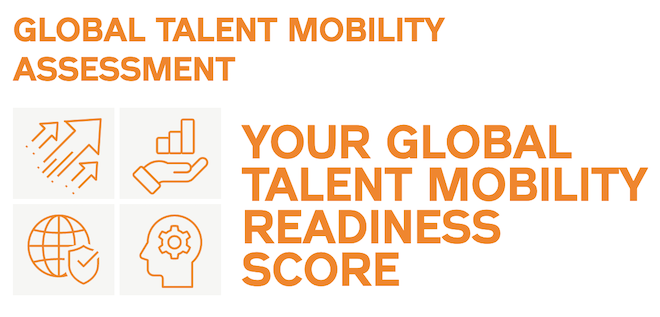
The Evolving Role of Global Mobility Programs
What we know as “global mobility” today is changing. Technology-driven solutions are helping to evolve it into a truly strategic function providing significant business impact by enabling global talent strategy.
Events like COVID-19, Brexit, and others have also shown us that global talent mobility programs play a larger role than just relocating people from A to B. Global mobility teams are on the front lines of business agility during global crises. At the same time, looking ahead to post-pandemic times, we may anticipate increased cost pressures on global mobility as a function.
Now is the time for global talent mobility teams to evaluate and adjust the services they traditionally offer to employees and the business, and by doing so be viewed as a function that brings significant business value, rather than solely as a cost center. Here are some of the ways global mobility teams can elevate their function for the future.
Creating Value for Employees
Leverage new data sources and modern tools for more informed and engaged employees
Current global pandemic conditions aside, the workforce is more willing to move and according to a recent survey, Strategic Global Mobility: Unlocking the Value of Cross-Border Assignments, by Harvard Business Review Analytics Service and EY, more than 70% of respondents expect the need for global mobility to increase.
Therefore, making sure the right people are deployed to the right locations has never been more important.
By using machine learning and AI organizations can predict how well suited an assignee may be to a certain location. In addition, with modern tools, employees can go beyond learning the basic facts about a location—schools, public transport, COLA rates, etc.—and find out what it feels like to live there.
Virtual Reality is being used in upfront decision-making, as well. The assignee can take virtual home and school tours, so no need for pre-assignment on-site visits—ultimately driving up efficiency and driving down costs. In addition, there are apps—from companies like Shyft—that allow the assignee to take home surveys on their phone. While saving money for the organization with no on-site surveys needed, it is also saving time and providing value for the employee.
Another important factor to consider is intention matching, or how do organizations connect an employee’s current assignment to future work? This process helps an employee answer this question, “Is this experience going to move me closer to my career aspirations?”, and helps an organization balance short term mobility needs with longer-term talent objectives. While an employee may not seem a perfect match for an assignment at first glance, by digging deeper it may reveal that with the right level of support, they would, in fact, be able to tackle the challenge, develop different skills, and springboard from that global experience to the next step in their career. Having an integrated global talent mobility platform and HCM can unlock this type of valuable insight.
Creating Value for the Business
Integrated systems create HR efficiency and insight for talent strategy
In the same survey, Strategic Global Mobility: Unlocking the Value of Cross-Border Assignments, more than 40% of the respondents said they didn’t have a global mobility strategy.
With an integrated global talent mobility platform, it becomes easier to establish strategic objectives.
With a platform in place, global talent mobility teams no longer spend entire cycles on tactical and administrative tasks such as downloading data, manipulating data into the right format, and sharing with the broader business.
Teams can achieve operational excellence more efficiently, meaning that while they are ensuring they react quickly to mobility business needs, they can also develop a global talent strategy while taking a deeper look into the entire program.
For example, a mobility team can start to build a presence in workforce planning. Mobility teams can help determine how many new hires are needed, how many will come from abroad, whether current policies will achieve the right objectives, what it all costs, and how long it will take for people to start in location. Mobility teams will be more proactive in finding the right talent through internal advertising of roles, identifying high potential candidates, and offering the right programs to assist and support internal talent mobility. In addition, the team can perform feasibility and trade-off analyses, by engaging in such tasks as side-by-side cost estimates with different candidates and different opportunities.
With the move to Talent Strategy, the goal line for measuring global talent mobility success changes as well. Success can now be measured on business and talent metrics, evolving beyond just “did the relocation go well—and was it on budget?”
Leveraging technology and automation, mobility teams can spend more time on problem-solving, talent/assignment forecasting, program performance, proactive compliance management, analyzing data to support strategic decisions, and providing data to the wider executive team for better organizational planning. All of these activities build the profile and presence of global mobility within your organization and ensure mobility continues to have a seat at the table for executive decisions.
With the industry evolving at such a quick pace due to technology, automation, and global geopolitical conditions it is time to take a look at how the function of global mobility can evolve. To see how Topia can help you transform your program from one that only handles transactions, to one that develops talent strategy, click here to request a demo.


